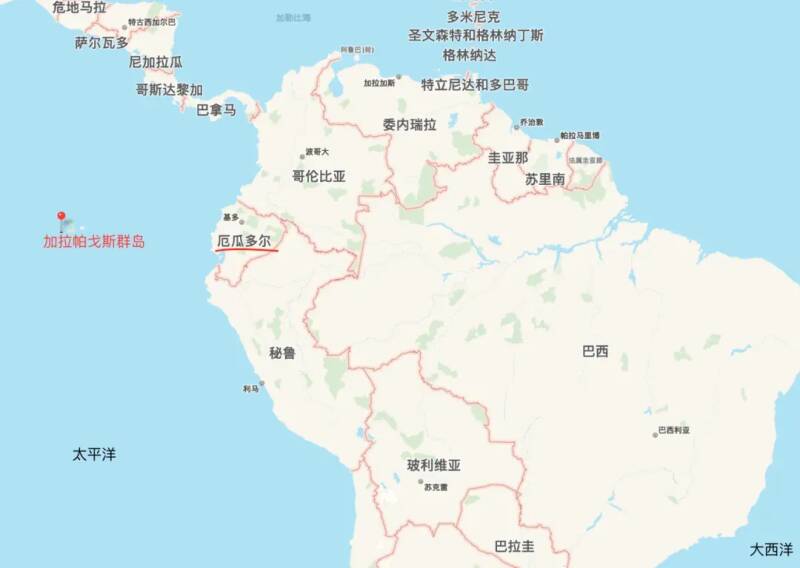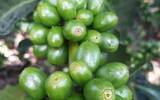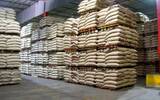Ecuador| Introduction to the treatment method of coffee varieties in coffee producing areas
In South America, because it is located in the coffee growing belt, coffee beans are grown in many countries, such as Brazil, Peru, Colombia, Ecuador and so on. Most people may know the big coffee countries such as Brazil and Colombia. in fact, there are many small countries that produce good coffee beans, such as Ecuador.
Ecuador (Ecuador)
Ecuador, whose full name is the Republic of Ecuador, is located in the northwest of South America, bordering Colombia in the north, Peru in the south and the Pacific Ocean in the west, with a land area of 256370 square kilometers, including 248000 square kilometers on the mainland and 8010 square kilometers on islands.

The national flag is rectangular, and the face of the flag is composed of three rectangles of yellow, blue and red, of which yellow occupies 1 big 2 and red and blue each accounts for 1 big 4. Yellow symbolizes the wealth, sunshine and food of the country, blue symbolizes the blue sky, sea and Amazon, and red symbolizes the blood of patriots fighting for freedom and justice.
On the other hand, the national emblem of Ecuador is painted in the center of the flag, and Mount Chimborazo, the highest peak of Ecuador, is painted in the center of the flag. On top of the mountain is the "May Sun" symbolizing Mayan culture. On both sides of the sun are the "zodiac" marked with the month of March, April, May, and June, representing the difficult years of the Ecuadorian people in 1845 to defend the country independently against foreign invasions. The next river flows into the sea, and one of South America's earliest steam ocean-going ships is moored at the mouth of the sea. the bundles at the bottom of the national emblem represent the state institutions of the Republic, symbolizing justice and authority. At the top, an Ecuadorian national bird vulture stands here, symbolizing sovereignty and independence.

Ecuador is crossed by the equator in the north of the border, and the Andes runs through the north and south. The territory is divided into four parts: the western coast, the central mountains and the Galapagos Islands in the eastern Amazon River basin.
The climatic conditions are diverse, so the four regions are different. The western coastal area has a tropical rain forest climate, with an average temperature of 23-25 ℃. The basin in the central Andes belongs to the savanna climate, and the mountain belongs to the subtropical forest climate, with perennial snow above 4000 meters above sea level, rainy season from December to June of the following year, and dry season from July to November. The eastern Amazon has a tropical rain forest climate, which is humid and rainy all the year round, with an average annual rainfall of between 2000 and 3000 mm. Ecuador has a diverse climate, abundant rainfall, volcanic soil and rivers, which make the country an ideal area for coffee cultivation.
Coffee producing area
Arabica producing areas are mostly concentrated in the plateau volcanic areas of the central Andes, roughly divided into north and south two high areas, the annual harvest time is from March to October, the country's coffee is famous for its sweet, sour and bitter balance.
Northern highland producing areas: Carchi in Karch province, Imbabura in Inbabula, Pichincha in Picincha province, coffee is famous for its sweet and sour balance.
Southern highland production areas: Loja in Loha province, Azuay in Asua province, and Zamora Chinchipe in Samora Chinchipe province. The altitude here is high, the coffee produced is moderate sour and sweet, and the aroma is delicate. The highest elevation in Loja province is 2100 meters, and the harvest period is from June to September. The province of Loja is one of the earliest cities established during the Spanish colonization of Ecuador, with a history of five hundred years. It is also the first city in the country to supply hydropower and wind power. Zamora-Chinchipe province (Zamora Chinchipe) is located in the east of Loja, the highest elevation is 1900 meters, and the harvest period is from May to August. One of the more well-known is the province of Picincha, and the more special Galapagos of the Galapagos Islands.
Robusta coffee is mainly grown in the hot, hot and humid western lowlands, Manabi in Manabi, Guayas in Guayas, El Oro in El Oreo and rainforest areas on the east of the country, such as Napo in Napo and Orellana in Orellana.
Pichincha: located in the northern highlands of the country, named after the Picincha volcano here, it has the water of the Alamoubi River and rich volcanic soil, which provides a favorable environment for coffee growth. The more famous sidra originally came to the province of Picincha in Ecuador.
Galapagos of the Galapagos Islands: also known as Turtle Island, so the coffee here is also known as Turtle Island Coffee. This is a volcanic archipelago made up of 21 islands. Sea turtle island coffee is planted only 200-300m above sea level, but the microclimate type is similar to the mountain area with a high altitude of 1200m to 1300m, with a maximum temperature of no more than 30 ℃ and two production seasons a year. Pesticides are not used at all on the island, and all coffee is organically grown and produced sparsely. The main cultivated variety is bourbon Bourbon.
Variety and treatment method
At present, the varieties of Arabica planted in the country are Bourbon Bourbon, Iron pickup Typica, Hijaw Sidra, Kaddura Caturra and so on, mainly Bourbon Bourbon.
At first, Ecuadorian coffee was not known for its quality. In order to keep down the cost of harvesting, the producers let the coffee fruit be ripe and dried on the trees before picking. This treatment is called cafe en bola, or bola, and the quality is very unstable. Later, with economic growth and the promotion of the concept of boutique coffee, Ecuador worked with scientific institutions in many countries to develop more stable ways to produce high-quality coffee. In recent years, Ecuadorian coffee is mainly washed with water, and most of the award-winning batches of Ecuadorian coffee are processed by washing or anaerobic washing.
Important Notice :
前街咖啡 FrontStreet Coffee has moved to new addredd:
FrontStreet Coffee Address: 315,Donghua East Road,GuangZhou
Tel:020 38364473
- Prev

What kind of coffee is the navel? What does the navel taste like in the border estate of Colombia? What is thermal shock fermentation?
Front Street Coffee: Colombia·Dividing Line Estate Big navel Production Area: Huilan Production Area Estate: Dividing Line Estate (Finca El Diviso) Elevation: 1700 meters Processing method: Double anaerobic sunshine Variety: Big navel Flavor: Grapes, oranges, blueberries, pineapple juice, spices, fermented aroma 2
- Next

Uganda's coffee exports fell in March! Government increases funding to boost production is expected to increase sales in China
Recently, the Coffee Development Authority (UCDA) of Uganda, an African coffee-producing country, released its March coffee export report. Uganda's coffee exports were 329686 bags of 60 kilograms, or 246.8 billion shillings,(64.74 million US dollars), but this figure was lower than the 434582 bags of 60 kilograms exported in February
Related
- What ratio of water temperature and ground does the smart cup method use to press coffee? The difference between brewed coffee and filtered coffee?
- What is the standard process for the purpose of coffee cup testing? What is the difference between hand-brewed coffee and cup testing?
- How to use hand-brewed coffee paragon small golden balls? How does cold coffee lock in the aroma of coffee?
- Is American coffee black? What is the difference between American coffee and drip coffee?
- Unexpected! Well-known tea beverage brand Lele Tea will withdraw from the Zhengzhou market!
- Starbucks enters the fashion and beauty industry?! Netizen: Give me an ice American eye cream
- Why can American refills for free? The difference between Americano and American drip pot coffee
- Being chased out of the rain in front of Starbucks?! Store: Sheltering from rain under umbrellas poses a safety hazard
- The white moonlight has changed?! Lucky launches "Big Winter Pear American"
- Hand-brewed coffee three-stage method, high-sweet and universal brewing method to share! What does the high sweet water level of hand-brewed coffee mean?

